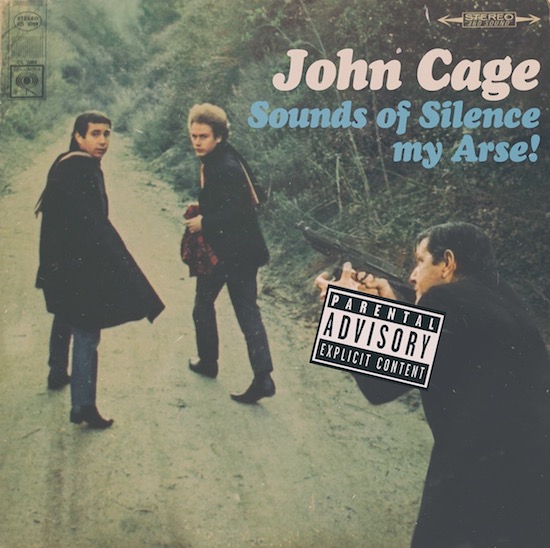"Discovered" record sleeves by Sean Reynard
It’s been a long time/ I shouldn’t have left you/ without some reviews of vinyl reissues of debatable necessity, remastered directly from CD with artwork taken from a poor quality JPG issued at a prohibitive cost to step to.
Apologies to the three regular readers of this column but I got hit by a car last November and forgot how to write for about seven months. In the meantime, I used my enforced time off work to listen to vinyl box sets and came to the conclusion that Nurse With Wound’s Soliloquy For Lilith is great for people suffering from great mental confusion, while Kamasi Washington’s The Epic is really good for when you really need to be getting your shit together and getting back to work because you’ve burned through your entire life’s savings. Luckily for me, while I was off, the black wax kept on piling up so hopefully, Vinyl Staircase will go monthly from now on until I clear the backlog.
Label Of The Month: Waxwork
It wouldn’t get made in 2017. The script for Taxi Driver – or its modern equivalent – wouldn’t get as far as an A-list Hollywood director’s desk, let alone a soundstage, a post-production suite or test audience. The film that made Martin Scorsese and Robert De Niro would simply be considered too slow-paced. There is undoubtedly now an algorithm that is applied to scripts for “action movies” or “psychological thrillers” that would necessitate more violence earlier in the film while also demanding the frenzied conclusion be less visceral and morally blank in order for this idea to be considered financially viable. Of course, Taxi Driver could not have worked in any other way. Only the slow unfolding of time allows us to see Travis Bickle’s descent from chronically fatigued, PTSD suffering vet into hollow-eyed, nihilist vigilante – and only Bernard Herrmann’s astounding score can give musical expression to this transformation.
Herrmann was a Hollywood heavyweight with his legend already safely secured by the time Taxi Driver was filmed. He was arguably the most famous person on the closing credits when it came out in 1976, given his CV included the scores for Citizen Kane, Psycho and Vertigo, not to mention cult-OSTs-in-waiting Twisted Nerve and The Day The Earth Stood Still. But with Taxi Driver I still see him as going out at the top of his game. On Christmas Eve, 1975, the very day after finishing the score, the 64-year-old composer went to watch rushes of his next job – Larry Cohen’s God Told Me To – and later that night, after dining with the director, he died in his sleep.
I can’t think of many original orchestral film scores that are as unsettling and as terrifying in their own right as this one. Other original soundtracks may shock with their use of jarring dynamics (some of the more notable ones composed by Herrmann himself), others may frighten the listener by provoking a Pavlovian response, while some pieces of music create genuine terror through sonic experimentation (the berserk and jerry-built “industrial noise” of The Texas Chainsaw Massacre springs to mind). But such is the intrinsic anxiety generated by the Taxi Driver soundtrack, that I find it difficult to listen to it on my own in the house at night. It is the orchestral equivalent of time-lapse photography of a vase of flowers dying or a bowl of fruit succumbing to mould. Such is the extent to which the score to this film is very much It’s Own Thing – it has always struck me as a shame that the track ‘Diary Of A Taxi Driver’ stoops to including some of De Niro’s oft-repeated/parodied dialogue from the film – a weirdly jarring move.
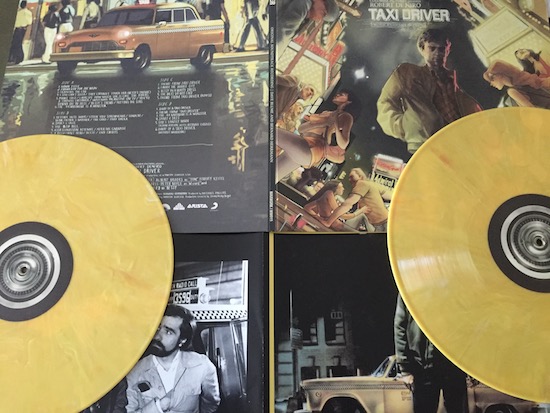
The effects conjured by Herrmann from two very simple musical strands are stunning (especially if you consider that it took just two days to put together the score). The standard interpretation is that the saxophone theme (played by Tom Scott, the hired horn used by Vangelis for Blade Runner) represents New York at night, with the brass section representing the psychological distress of Travis Bickle, but I see these roles as essentially two sides to the same coin. The romantic but exhausted sounding theme is Travis Bickle’s own brittle self-image – a reasonable guy who is surrounded by nothing but filth and degradation – with the brass mapping out the vast, traumatic psychological recesses into which he is collapsing. Hence the gradual and subtle repositioning of the main theme over the course of the film as the trumpets and trombones move dissonantly on to it.
The urban cityscape is also mirrored in the foregrounded brass (which is flat, harsh and anhedonic) and other instrumentation that mimics diegesis – harp glissandi, crashing timpani, amphetamine agitated snare flourishes – which trigger associations of burst hydrants, glittering street lights and the bustle of a city too wired to sleep. (This is as well as actual diegesis – the soundtrack features car horns and a sidewalk snare drum player, as well as some snatches of dialogue.)
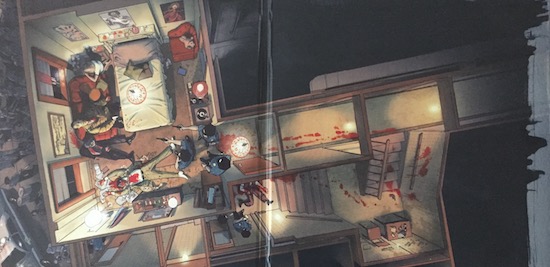
The score for Taxi Driver is as much a New York album as Bitches Brew or White Light/White Heat. As such it should be owned on on a disc of wax with a spiral scratch, and this is where my vinyl label of the month Waxwork Records comes in. I like to think the good folks over in America could sense the dissatisfaction I had with my battered secondhand copy of the soundtrack, complete with irremovable MVE sticker (why goddamnit, WHY?), which never used to get taken off the shelf because it was so grotty looking, and so they decided to help me replace it with a fabulous double LP on clear yellow vinyl with stunning, all-new art by Rich Kelly. The inner gatefold illustration of Matthew "Sport" Higgins’ brothel post-shoot out as seen from the God perspective … now, that is something you should see. (It’s an extended version of the soundtrack but I’m going to skip over David Blume’s contribution to the music in the same way you should skip side C of this otherwise excellent record.)
So, listen you fuckers, you screwhead s… here is a record label who would not take it … here is a record label who stood up and gave you the high quality vinyl reissues of the OSTs to The Warriors, The Thing and Altered States that you didn’t know you needed. And here’s something else: why, when John Carpenter employed Ennio Morricone to score The Thing, did Il Maestro turn in an OST that in parts were more Carpenteresque than JC himself could have produced? Hopefully we’ll get round to this conundrum and other burning issues in future months as we stride ever more purposefully down the vinyl staircase.
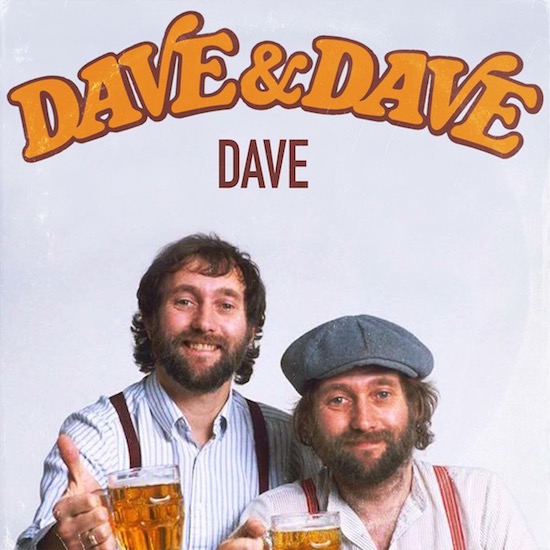
Kraftwerk – 3-D: The Catalogue – The Vinyl Box Set
Dear God, but these Kraftwerk boxes are dense and imposing objects. My postman – who is irascible at the best of times – issued me with a stern “For fuck’s sake!” as he handed this particularly weighty package over to me. Once unwrapped, the shiny bright red box resembled nothing so much as a single, durable, bulletproof, fire-resistant brick from a proposed future border wall designed to keep masses of people either in or out of a huge enclosure. But Kraftwerk have form when it comes to issuing monolithic statement box sets.
The Catalogue, which was finally released in 2009 by EMI after being demoed in 2004, was a vinyl-sized box containing eight albums on CD. That was bulky enough, but you could actually kill someone with the sheer heft of 3-D: The Catalogue. (In this review I’m talking about the vinyl box but it is also available in Blu-Ray, DVD, CD and download formats.) The bang you get for your buck is essentially live versions of Kraftwerk albums numbers four through 12 that have been cunningly renumbered one to eight.
This renumbering game is part of an audacious attempt at mass hypnotism that stands on par with Lord Business’ use of the Kragle on Taco Tuesday in the climactic scenes of the Lego Movie. This overt act of rebranding started with The Catalogue in 2009 but had been brewing for a great deal longer. Pretending that Autobahn is album number one and so on is actually the endgame in a ring-fencing project that stretches back over four decades. Ralf Hütter and Florian Schneider first turned their back on “Kraftwerk the early years” absolutely yonks ago. There have only been five official German represses of Kraftwerk – their astounding “Orange Traffic Cone” debut album from 1970 that features the slamming motorik flute jam ‘Ruckzuck’ – and the last of those came out in 1980. According to Discogs, there have been 28 bootlegs of it since.
Nowadays it’s only Ralf at the helm (alongside anonymous left-swipers Cuthbert, Dibble and Gruber when playing live,) but enthusiasm for the David Copperfield-proportioned confidence trick remains firmly intact – and that’s despite all of the glorious evidence freely available on the net documenting exactly how good the band were prior to 1974. I have the Kraftwerk double vinyl compilation of their first two, self-titled albums, which came out in Britain on Vertigo in 1973. The inner gatefold is something to behold, containing as it does, photographs of members of Kraftwerk variously playing the flute, having long greasy hair, wearing leather trousers and in one shocking piece of photographic evidence, donning a tennis player’s headband. A year later they were smartly dressed and immaculately coiffured recording Autobahn, creating the future as they went. And the following year they were introducing their sound to a gobsmacked America, playing along with Lester Bangs’ oafish and homophobic line of questioning, all too happy to take on the role of emotionless, future-ushering Teutonic robots to his partially unreconstructed, partially-= knowing, guffawing intellectual rock pig – with all memory and mention of blazing, Sabbath-heavy, synth & flute psych jams played to squats full of smackheads in Berlin, Hamburg and Cologne just months earlier brushed handily under the rug by both parties.
So Kraftwerk began building this huge, impermeable perimeter wall in the mid-70s but we simply didn’t notice. Part of this fortification process has been a masterful control of their own narrative. At their old studio/offices in Dusseldorf they had a typically Kraftwerkian way of keeping interviews to an absolute minimum (thus controlling their story). The few journalists they deigned to speak to during any given year would be given a number for the Kling Klang phone and told to call it on a specific time and date. The phone did not have a ringtone. Ralf would simply pick up the receiver at the allotted time and if there was a journalist at the other end they would answer her questions, and if there wasn’t, he wouldn’t.
But given that to all intents and purposes their production of new music ceased in 2003 after the release of Tour De France Soundtracks, the very nature of the group became radically altered. The Gesamtkunstwerk was complete but then the moves to secure it for posterity really went into overtime. At first I gleefully embraced the all-touring, non-recording version of Kraftwerk: the ability to watch them play ‘Pocket Calculator’ live should be the birthright of all human beings. Only the saddest stick in the mud contrarians, I thought, stood in opposition to them. First of all, who would begrudge these absolute titans the chance to earn some proper money? For a band that is routinely called the second most influential of all time (after The Beatles, natch), check out their pusillanimous chart positions. (‘Neon Lights’, one of the greatest singles ever recorded, didn’t chart anywhere in the world. Even worse, Trans Europe Express didn’t get into the top 40 albums chart in the UK and didn’t enter the Billboard Hot 100 in the US.) Sadly, there’s very rarely a first place prize in music. But still the criticism came thick and fast. They were betraying the creativity of their own legacy by not recording new material. They had reduced themselves to a mere museum piece. Worse, they had become a karaoke version of themselves. And, unforgivably, it wasn’t even the classic line up!
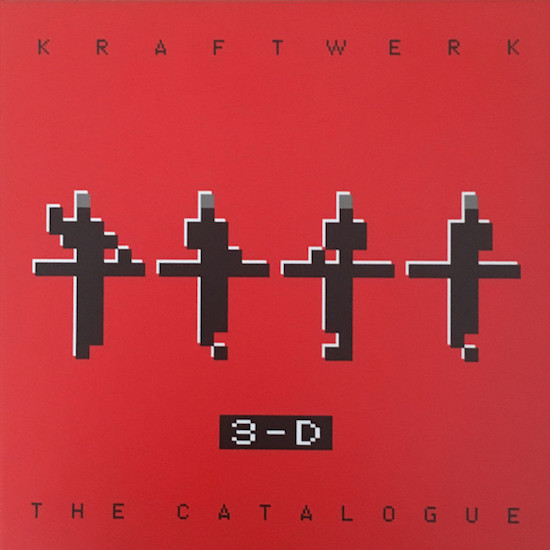
Well, the objections of the naysayers no doubt intensified in November 2008 when Florian announced he was quitting the ranks to pursue a solo project. Anyone who has ever worked on a music title will tell you that they spend a significant percentage of their time dealing with correspondence that shows a weird level of entitlement and over-familiarity from diehard fans of certain groups. But even though I don’t agree with them, I do understand where the “No Jarboe – no Swans!”; “No Kim Deal – no Pixies!” “No Dave Lombardo – no Slayer!” crew are coming from. However it doesn’t matter how you cut it, anyone of the opinion: “No Wolfgang Flür – no Kraftwerk!” should be kept away from sharp objects for their own safety. Ignoring for one second the fact that the original line-up of Kraftwerk didn’t survive long enough to see out the summer of 1970, all that was needed to be said on this score was stated eloquently on The Computer World tour of 1981, when they rolled out the mannequins to perform ‘The Robots’ for the first time: a hugely significant symbolic act. I wish Ralf Hütter nothing but a long, healthy and enjoyable life but at the same time I do think there is something thrilling about the idea of Kraftwerk becoming the ultimate example in music of The Ship Of Theseus when he finally hangs up his LED enhanced neoprene boiler suit and clip-on microphone. Sure, on one level they would only be stepping daintily, like Wenceslas’s page, into deep and crisp and even footprints left in the snow by the Sugababes and Yes, but on another level they would be inaugurating an artistic institution of something powerfully utopian – a vision of a truly endless European music. (Something m’learned colleague Luke Turner first suggested on this site in 2009.) Imagine the prestige of being chosen years in advance as a replacement member of Kraftwerk. The years, if not decades of rigorous training, as if for the synth pop version of an Oberammergau passion play. To be raised from birth – possibly even grown in a test tube – to join the hallowed ranks. (Yes, let us do that, because it is better to imagine this glorious vision of futurism, and not the outrage from Daily Mail Online readers when the first female Kraftwerk member is announced.)
The people who objected to these shows (well, the ones I spoke to anyway) were applying hoary old rockist tropes to the situation, denying the fact that Kraftwerk, or this incarnation of them at least, are a pop group, and therefore denying their primary role as entertainers. Innovators they definitely are but ‘The Model’, ‘Tour De France’, ‘Showroom Dummies’, ‘The Robots’ are how we all came to Kraftwerk. On Top Of The Pops. On Radio 1. Via Smash Hits. Via NME. Via The FACE. (*And I’d happily call bullshit on any British person between the age of 30 and 60 who claims otherwise.)
And then, in 2012, to cap it all, they started playing their back catalogue in the full album format.
My feeling is that any artist or group who has either an unimpeachable decade or releases three all-time essential albums back-to-back should be forgiven any later musical transgressions – meaning that Metallica, Brian Eno, Miles Davis, Fela Kuti, David Bowie, The Fall, Kate Bush are among those to get a free pass. And so are Kraftwerk. Comfortably. But is it even so bad that Kraftwerk went down the route of touring albums played in full? Do they even need to be forgiven for this? Well, generally speaking, this fad is utterly appalling and nearly always an irredeemable experience. Mighty titans Slayer and Public Enemy were atypically sluggish when spoon-feeding their audiences rarely bettered long players It Takes A Nation Of Millions and Reign In Blood for ATP’s Don’t Look Back franchise and those were some of the best examples of shows in this format that I’ve ever seen. At the other end of the scale the results of this trend were abysmal. The Frogs playing It’s Only Right And Natural? (The who? It’s what?) There were exceptions: Ennio Morricone performing Classic Film Soundtracks (because orchestral music exists in a different tradition to duff indie rock from America) and SunnO)))’s The Grimmrobe Demos (because, were they really playing that album in full or were they just making a noise that sounded like God falling into a black hole?)
But, general misgivings aside the Tate Modern Turbine Hall shows of February 2013 were fantastic. A grand gesture recontextualising these albums as landmark works of late 20th century art – with similar runs taking place at MoMA in New York, Akasaka Blitz in Tokyo, the Sydney Opera House, Norske Opera Oslo, the Paradiso in Amsterdam, Fondation Louis Vuitton in Paris and the Neue National Galerie, Berlin over a period of four years. And it was out of these specific shows that this eight-album box set emerged.
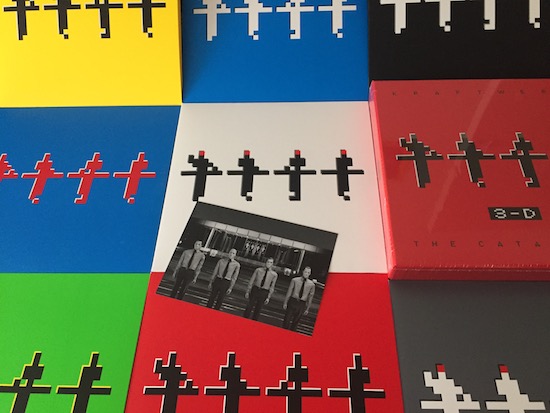
Now, let me get to the point. This box set is great. If you’re a Kraftwerk fan like me, you’re going to love it. Shit, you almost certainly already own it, as ill health has led to me writing this review nearly two months later than I should have done. The breadth of the material spread over nine discs (The Mix is a double), the unimpeachable recording and mix job and the fact that some of the material has been audibly reworked puts enough clear space between this and Minimum-Maximum to make it enticing to fans – and they are the only people who are going to buy this. So you’re getting roughly the same “Atomkraft? Nein danke!” we-are-the-woke-robots take on ‘Radioactivity’ that has been in the band’s set for years (the one that doesn’t eulogise nuclear power being in the air for you and me but instead lists the sites of manmade disasters such as Fukushima, Chernobyl, Harrisburg and Sellafield), but it has been updated yet again and reviews claiming all this material is identical to the album versions or earlier live versions are flat out wrong; true, you’re also getting a lot of The Mix versions of tracks so there’s a chunky 90s techno/techno pop feel to a lot of the material but then you are also getting a subtly new arrangement of ‘Autobahn’. (‘Kometenmelodie’, ‘Spacelab’, the harshly abridged ‘Trans Europe Express’ and the Underground Resistance remix-interpolating version of ‘Planet Of Visions’ were among the other tracks retweaked for the 2012-2016 performances.)
But now the entire project has been remixed, remastered, reissued, redesigned, repackaged, recorded live, filmed and photographed – I have to admit that even I’ve had enough. I’m poised to join the ranks of the naysayers. This box set surely must represent the last brick in the wall. The imperial Kraftwerk project is over and their legacy now has the kind of security that the majority of groups can only dream of. To tinker with this material any more in any other way would simply threaten to start unravelling all this work.
So what next?
Ralf has actually tantalised us with a couple of possibilities – and both exist on the wilder roughlands outside of the perimeter walls of the ring-fenced Kraftwerk project. In 2010 he suggested that the group’s first three albums – flute solos, headbands, leather trousers, traffic cones and all – may get the lavish reissue treatment. Audio is being gathered. Photos are being compiled. Designs are being commissioned. Apparently. Which is cool and everything, but three years later he dropped the real bombshell. Speaking in June 2013 after performing the eight-album run at Sydney Opera House, he told the audience: "Now we have finished one to eight, we can concentrate on number nine.”
Please – in the unlikely event that you’re reading Ralf – just go for it. There’s literally no way you could now damage the Kraftwerk legacy, even if you were to suddenly develop a taste for bro-step, Miami bass, witch house, happy hardcore and trap. Outside the perimeter wall lies liberation, once more the possibilities are endless.
John Coltrane Reissues
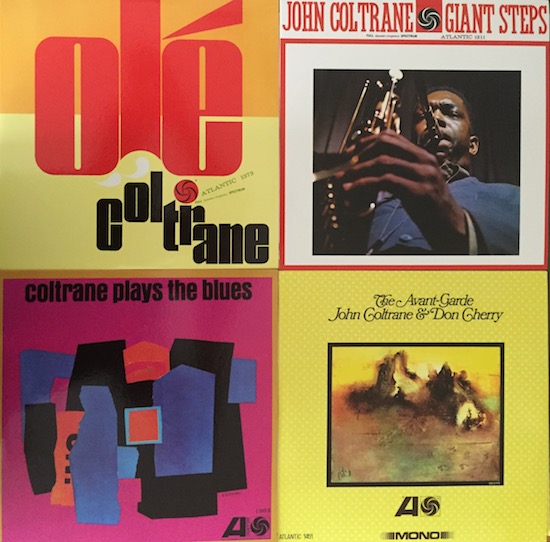
Listen, I’m not here to tell you what to do* but if you’re old enough to drive a HGV, vote or serve in the armed forces and you refer to Beyoncé as Bey, you deserve to be shot out of a cannon straight into the heart of the sun. And while I’m at it the same goes for John Coltrane. I am of the opinion that it should be legal to apprehend anyone overheard referring to him as ‘Trane, before wrapping them in barbed wire and pushing them into a fully operational hay-baler. Oh yeah, you love ‘Trane, do you? Do you want to tell me about the homemade marmalade of free range squid, urban-sourced wild pavement garlic and ethically herded, sun-blushed moss you’re having for your supper tonight while listening to a wax cylinder audiobook of Tao Lin’s poetry recited in morse code by George Monbiot on kazoo as well? You absolute melt.
I’ll be the first to admit that the rules in this area are hard to learn and may feel counterintuitive but barbarism is barbarism and the onus is on you not to commit it. For example, don’t call Don Cherry Donald, you piss-taking whopper – Don is just fine, but on the other hand there’s a particularly hot and uncomfortable corner of Hell reserved for people who insist on referring to vibraphonist Milt Jackson as Bags. Milt Jackson and Don Cherry feature prominently on this series of six Atlantic Records In Mono reissues of Coltrane – some of which definitely attract the tag “essential artefacts”.
The sax player took giant steps forward in several senses just before the dawn of the 1960s – just a fortnight after he finished playing on Kind Of Blue with Miles Davis, he began the principal recording on what would become his first truly outstanding record. His move to Atlantic from Prestige, brokered by Davis’ manager, Harold Lovett, included the security of a relatively large annual income as well giving him the kind of freedom he’d never had before. Giant Steps could also refer to the strides he was taking away from chordal jazz and his meticulous and methodical exhaustion of themes into a new quicksilver fast scalarity that sounded like hot water singing through cold pipes.
Perhaps Coltrane’s short time at Atlantic can serve as a map of his transitional take-off period, culminating as it does with Olé Coltrane just a year later. There’s a lot of talk about competition with/the influence of Miles Davis surrounding this utterly astounding LP – as in, perhaps Coltrane was pushed in this Iberian direction by hearing Sketches Of Spain just months earlier, but if there’s an actual concrete sonic link between the two albums I’m not hearing it. The title track borrows from the Spanish Civil War era folk song ‘El Vito’, but then ‘Dahomey Dance’ and ‘Aisha’ on the flip side owe more to his interest in African forms, which he had just been exploring weeks earlier on Africa/Brass – his first outing on Impulse! (Art Davis and Freddie Hubbard stayed on to play on both sessions).
The other four albums in this series, including the Milt Jackson collaboration Bags And Trane, are cool of course. The misleadingly titled The Avant-Garde John Coltrane & Don Cherry is a collection of Ornette Coleman compositions played by the duo, ably backed by Coleman’s quartet. (And no, you absolutely cannot refer to him as Colonel Mustard – no matter how much you dig his music.) As a sop for those disappointed by the lack of actual strictly defined avant garde music on this album, there is the kind of artwork and typeface that you would only otherwise see on the cover of a mildly erotic paperback novel about chicanery in the Dutch art world of the mid-1970s.
At this point, I’d like you to imagine a fictitious state of affairs. I’d like you to imagine you are the editor of an online magazine dedicated to, say, the world of board games. Owing to an unfortunate turn of events, several of your (really very nice at the end of the day) writers have completely failed to hand in copy on the allotted date at the allotted time meaning you have to stay up all night writing a column just so you have something to publish on the site the next day. This column is the first you have written in nearly a year owing to an annoying … gardening accident, let’s say … and the article is dedicated to the reissue of vintage boardgames that often cost far too much money and often come emblazoned with stickers on the shrink wrap that claim they are “essential” board games or “holy grail” board games, even though no one had ever heard of them five months earlier. You spend the first half of the night struggling in vain to tame a really terrible and uncontrollable metaphor about a huge ring-fenced wall in order to describe what you can only hope is the last time Hasbro will ever reissue Monopoly before moving on to designing new and exciting boardgames that reflect the 21st century – even though it really is a fine reissue of Monopoly. And then as you struggle through the other two sections of the feature into the early hours of the morning with a head full of madness and a heart full of modafinil you notice with consternation that you can actually perceive a halo of cartoon mugs of coffee flapping round your own head. Then for no apparent reason you appear to be scaling a volcano made out of lime green jelly chased by a seething flock of thousands of spiders made out of Lego. But then as your son shakes you awake you realise that your tongue is now welded to your Macbook keyboard and your spine appears to have taken on the shape of a question mark because you’ve slept in your chair. You place Coltrane Plays The Blues on your turntable and what previously seemed unengaging now makes complete sense. There is a sense of hysteria-edged exhaustion, which creates the perfect bed for listening to this album. And for a brief moment it is speaking directly to you clear across the decades as if it were the very day it were recorded. God bless those rascal writers. Although – seriously – there will be hell to pay next time.
Coltrane, of course, went on to release several truly avant garde records a few years later. I’ve copies of A Love Supreme and Ascension and Sun Ship and while I like and admire these records, it’s still Olé Coltrane that I would rush into a burning flat to save. If you don’t know much about jazz at all or you’re just a casual listener like me – then more fool you for taking notice of anything I say. You should be heeding the advice of an expert – unlike other styles of music, jazz really is like rocket science. But really, whatever – just go out and buy a copy right now. It’s real top 100 albums of all time stuff. You’ll thank me.
*I am here to tell you what to do. Like Davros in slippers and a High On Fire T-shirt.

